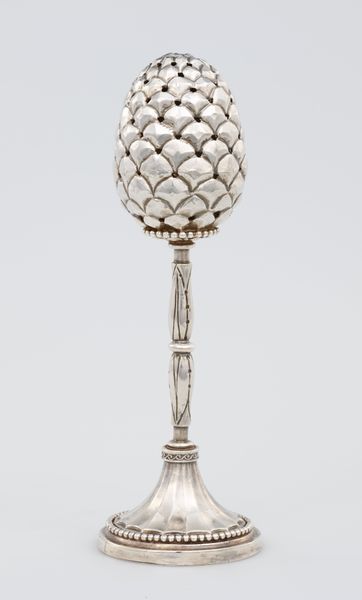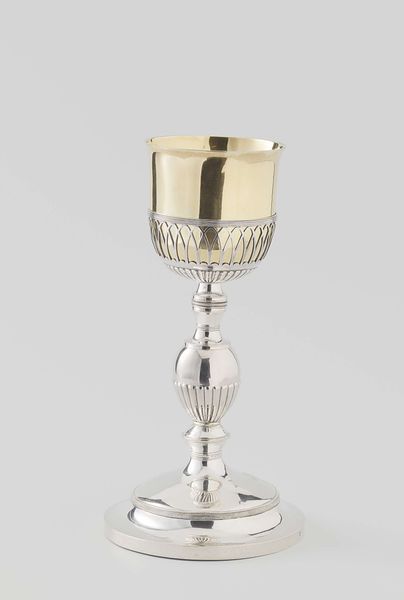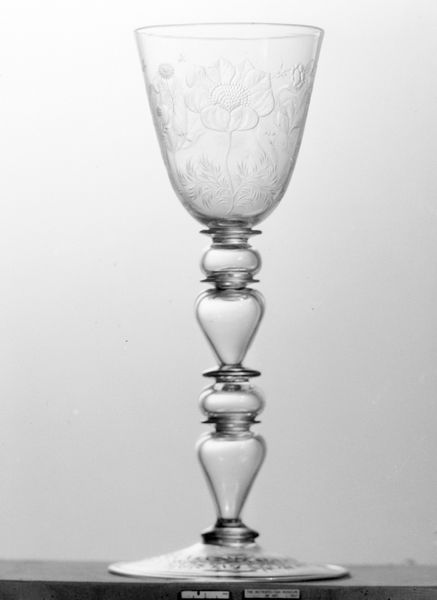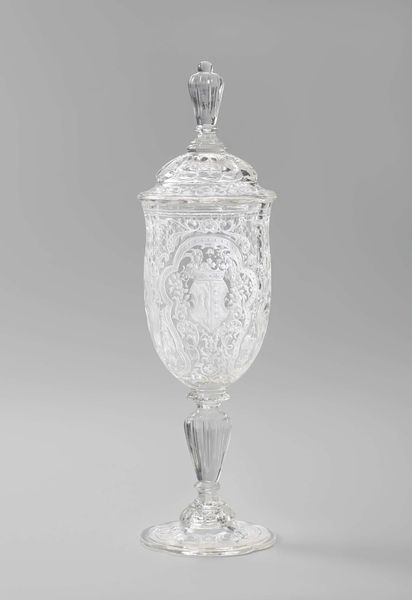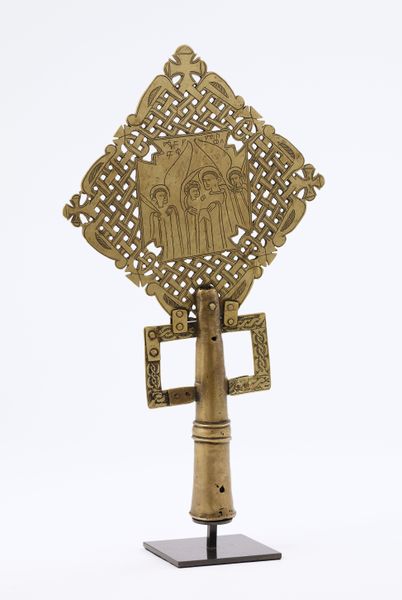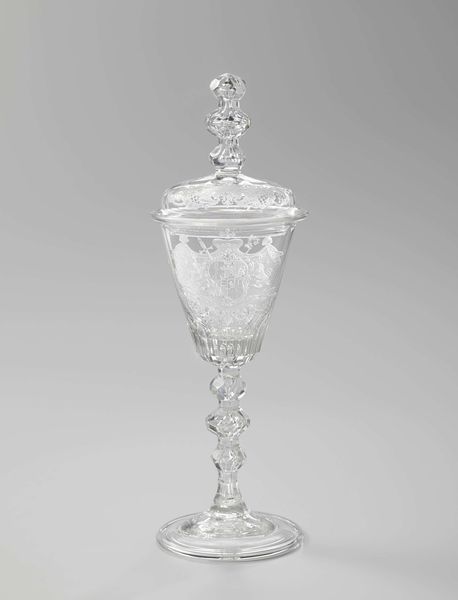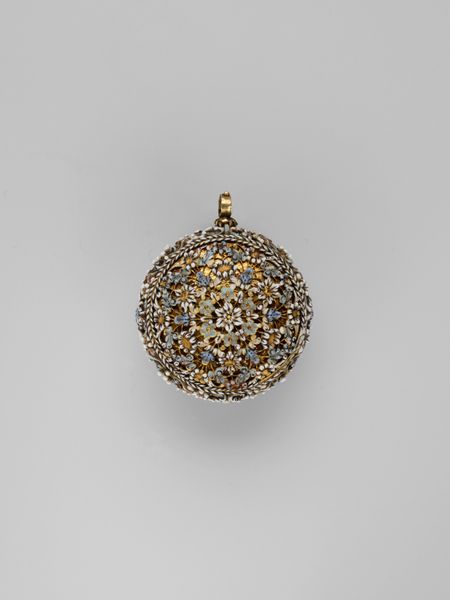
silver, metal, sculpture
#
silver
#
baroque
#
metal
#
sculpture
Dimensions: height 41 cm, diameter 11 cm, weight 700 gr
Copyright: Rijks Museum: Open Domain
Curator: The object before us is an exquisite example of Baroque craftsmanship: a gilded silver grape cup, crafted between 1600 and 1625, likely by Heinrich Mack. Its materiality immediately strikes one. Editor: Yes, there's something almost comical about this highly polished object. It feels so intentionally weighty, both visually and I imagine, physically. Curator: Note how the individual silver grapes, uniformly shaped and sized, coalesce to form the cup itself. The perfect spheres suggest an almost Platonic ideal of the grape, divorced from its organic origins. It’s structure imposing, really. Editor: I’m also fascinated by the supporting figure, laboring to hold this vessel aloft. What does the process of its creation entail? The sheer effort of forming the metal and chasing the details – this makes visible the relationship between material, maker, and user, doesn't it? Curator: The figure certainly provides an allegorical dimension. He introduces a kinetic dynamism to the otherwise static composition. The texture of the ornament that resembles flowers creates a great sense of movement toward the sky. Editor: I see more than just dynamics; I also see human labor distilled into decorative form. The gilded finish seems almost to mock this laborer's toil. The whole thing serves the elite, doesn't it? Drinking vessels fashioned from precious metals like this were status symbols. The work stands as proof of human endeavor and artistry. Curator: Perhaps. But there is no question regarding the careful harmony between the form of the grapes and the shining quality of silver. It’s self-contained. I struggle to extend the scope of work in the outside when there is a whole universe here. Editor: Maybe so. But isn't that narrow formal approach part of a wider story, even in how the craft of artwork exists? To simply see its internal value strikes me as artificial separation between its materiality and making in the context of economic disparities, you see? Curator: I appreciate that alternative approach in understanding how external forces come into the existence and meanings behind things. Editor: And conversely, it is vital to understand not only context and production, but how design plays such a pivotal role in shaping our views, too.
Comments
No comments
Be the first to comment and join the conversation on the ultimate creative platform.
